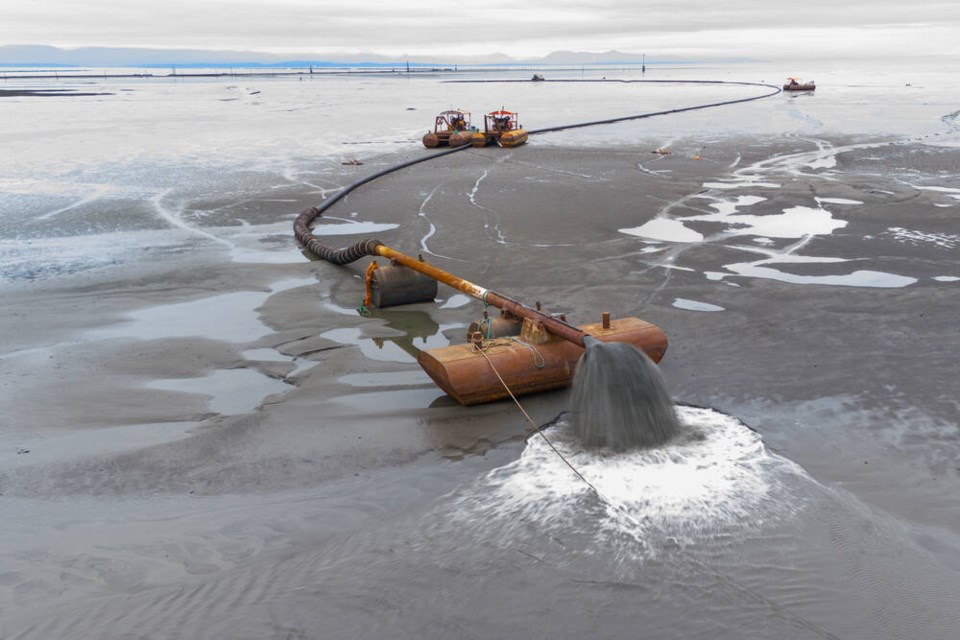The culmination of more than 12 years of research, planning, and lessons learned, the Sturgeon Bank Sediment Enhancement Pilot Project has completed a second year of restoration on the coast of Richmond.
The project aims to restore receded tidal marshes by introducing fine sediment onto the tidal flats, enhancing natural processes disrupted by human interventions on the Fraser River over the past century.
The primary goal of the project is to foster tidal marsh restoration in the short term, with a broader vision to scale up the initiative across Sturgeon Bank and potentially apply the concept to other areas within the Fraser River delta for long-term restoration success. Ducks Unlimited Canada (DUC) is one of the partners leading the project alongside Raincoast Conservation Foundation, Tsawwassen First Nation, and the Lower Fraser Fisheries Alliance. The project is funded by the BC Salmon Restoration and Innovation Fund, with additional funding from the Pacific Salmon Foundation, Tsawwassen First Nation, the Vancouver Fraser Port Authority, and Nature Force.
The latest phase of the project took place during three weeks in February utilizing a temporary sediment delivery pipeline stretching approximately 1.4 km, pumping silt onto Sturgeon Bank.
Last year’s addition involved mostly larger-grained sand, while 2024 entailed enhancing the area with a finer-grained silt.
“What sets this initiative apart is the innovative approach to sourcing sediment,” said Eric Balke, Senior Restoration Biologist for DUC. “By collaborating with an existing dredging project at Captain’s Cove Marina in Ladner, the project repurposes fine sediment that would have otherwise been disposed of at sea. It showcases an environmentally beneficial way of repurposing dredged sediment to restore crucial tidal marshes, contributing to community resilience while mitigating coastal flooding risks.”
Learn more by visiting our site or stopping by the Sturgeon Bank West Dyke Trail to take a look.
Editor’s note: Nature Notes is a monthly column presented by the Delta Naturalists and their community partners. For info on monthly meetings and more see: deltanaturalists.org and www.facebook.com/DeltaNats/.



